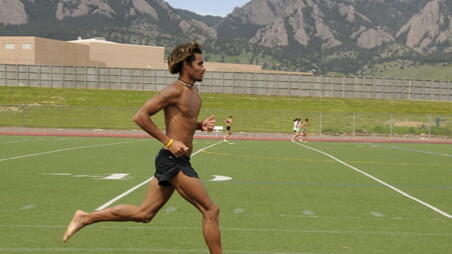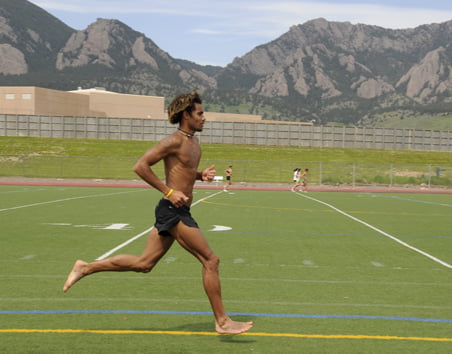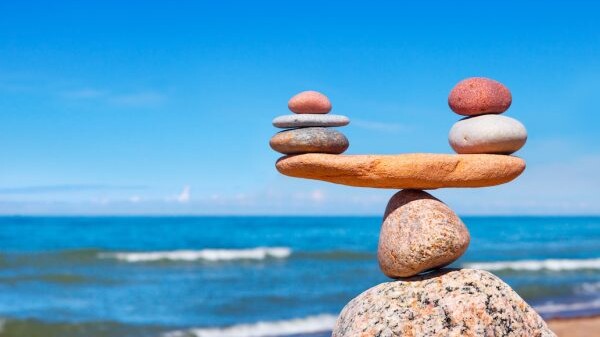
There is increasing publicity and popularity involving barefoot running and its potential to improve performance and reduce injury rates in runners. However, as with most new medical “wonders”, behind the hype there is often as many questions remaining as there are answers!
 Footwear companies over the past decade have spent millions and possibly billions of dollars on Research and Development, in an attempt to bring state of the art shoes to the market – shoes that are designed specifically for different foot types as well as different sports. However due to a lack of any hard evidence proving that specific shoes do actually reduce injury rates or improve performance, there has been a recent shift against shoes. Barefoot Running is a new catchy term in the running world, however with this term also comes the term “minimalist shoes”, which relates to shoes that have been designed to mimic barefoot running.
Footwear companies over the past decade have spent millions and possibly billions of dollars on Research and Development, in an attempt to bring state of the art shoes to the market – shoes that are designed specifically for different foot types as well as different sports. However due to a lack of any hard evidence proving that specific shoes do actually reduce injury rates or improve performance, there has been a recent shift against shoes. Barefoot Running is a new catchy term in the running world, however with this term also comes the term “minimalist shoes”, which relates to shoes that have been designed to mimic barefoot running.
Some of the strength of the push towards barefoot running has come from a book titled “Born To Run” by Christopher MacDougall, and in particular from Daniel Liebermann, a Human Evolutionary Biologist, a strong advocate for barefoot running. Companies such as Nike and Vibram have brought minimalist shoes to the market that you may have heard of or read about, shoes such as Nike Free and Vibram Fivefingers.
Why Barefoot Running?
The advocates for Barefoot Running base their argument on a few premises:
- Humans were designed for distance running due to our role as hunter-gatherers, chasing and catching prey. This distance running was performed in bare feet. Therefore our bodies are designed to run WITHOUT shoes, and wearing shoes is abnormal.
- There is no evidence that shows that shoes reduce injury risk. It seems that 70% of joggers are getting injured today (with good shoe technology) which is comparable to 70% of joggers getting injured in the 1970’s (with poor shoe technology).
- 100% of the people who are accustomed to shoes land on their heel when running in shoes. 90% of regular barefoot runners land on either their forefoot or mid foot. (based on a study performed by Daniel Liebermann). Heel striking runners have far greater forces placed at a far greater rate on their legs and joints which increases injury risk.
- Landing on the forefoot and mid foot reduces impact loads and makes the muscles of the legs and feet work harder, improving strength and conditioning of these muscles, and therefore improving performance.
Why Not Barefoot Running?
There are a few counter arguments to the above mentioned points, namely:
- Just because something was normal years ago doesn’t mean it remains normal for eternity. 100 years ago cars had no safety features, so it doesn’t mean that cars today are “abnormal” because technology has improved! So even if we were designed for barefoot mobility in the beginning of time, this doesn’t mean that barefoot running is normal today.
- Whilst injury rates may remain similar, there are many more people running today, with many different body types, than there were 40 years ago. So there may well even be the argument that shoes have helped reduce injury rates, as todays joggers have a greater injury predisposition.
- The next point actually comes from Liebermann’s study, which shows that 83% of people, who are accustomed to shoes still land on their heel even when barefoot, actually increasing by SEVEN times the impact forces compared to running in shoes with the same heel landing. In other words, if you get barefoot running landing technique wrong, the consequences can be severe.
- Whilst impact loads are certainly reduced, enormous extra loads are applied to specific tissues such as the achilles and plantar fascia of the foot. These tissues are not used to absorbing such loads so are very vulnerable to injury. For many people, the process of letting your tissues adapt to this extra load via an altered training program would take so many months that it wouldn’t be worth the effort.
And the Debate Continues…….
We could keep listing debates from opposing sides, however like all medical/physical interventions, there is no miracle shoe or running technique that suits everyone. It is critical that anyone thinking about barefoot or minimalist running gets good advice from our physio’s before doing so, as there is a definite chance that a poor or incorrect transition will actually increase your running risk. We also have a very close association with Active Feet, who have just opened a new clinic in Sandringham, and have kindly offered all our patients a discount on footwear at their shop (see link in left border). It is imperative for anyone that is considering minimalist running to get good physiotherapy advice on the suitability of trying this, good footwear advice to select the right shoe, and then good training advice on how to transition from normal footwear to minimalist shoes.
Our final general suggestions would be:
- If you struggle with chronic soft tissue injuries then barefoot running may be worth considering.
- If you are not injured but would like to try barefoot running, BE VERY CAREFUL, and ensure you get the right advice and footwear.
- If you do a lot of running, the potential increased injury risk and significant alterations to your program may prevent you from considering barefoot running.
For anyone requiring further information regarding barefoot running, Rob and Dane are our two physio’s with extensive experience in the treatment and management of running injuries.
You might like these other resources
Are Your Bones Strong Enough?
28 May 2024
BEWARE YOUR SCAN RESULTS!
23 February 2023
STAY OUT OF THE BASEMENT THIS SUMMER
23 December 2022
Staying Healthy – The Missing Pieces Of The Puzzle
17 November 2022
So I Don’t Need A Knee Reconstruction Anymore?
8 September 2022





